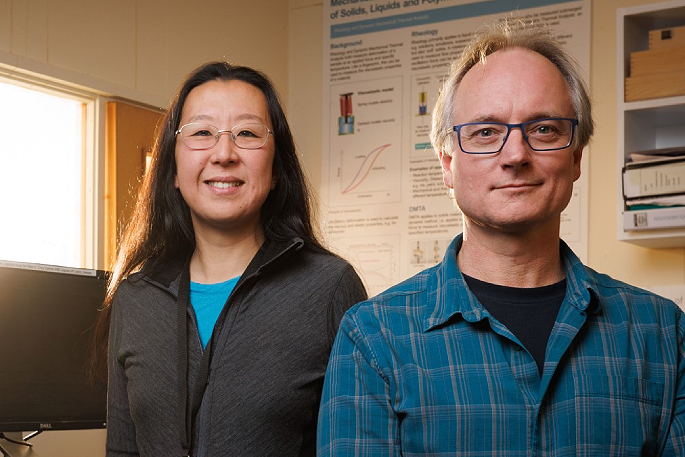Scion is toasting the success of two leading researchers after they’ve earned the equivalent of an Olympic gold medal in the world of science.
Drs Marie Joo Le Guen and Stefan Hill are among the authors who have contributed to a research paper published in the scientific journal Nature Plants – one of the most respected scientific journals in the world.
Nature covers a wide range of disciplines, and its articles are known for their high impact and global significance.
Becoming a published author in any of the Nature journals is considered highly prestigious in the academic community – an achievement not lost on the Rotorua researchers.
“Getting into Nature is something you hope for,” says Dr Hill, Scion’s portfolio leader for High Value Biorefineries.
“As a group, we submitted the manuscript earlier this year and, as with most journals, the reviewers were very picky, but this process felt like it was next level.
“They question all aspects of the science, so when you finally receive an email that tells you your manuscript has been accepted, you feel elated. It’s nice to see that our science is of a level that is deemed worthy of being included in a journal like Nature.”
Their research paper, titled ‘Ectopic callose deposition into woody biomass modulates the nano-architecture of macrofibrils’, was led by Dr Matthieu Bourdon of the University of Cambridge and involved 33 researchers from more than 20 universities or research organisations around the world.
The research showed how trees could be genetically modified to produce wood that is easier to process into biofuels and chemicals that can replace those made from fossil fuels.
They did this by genetically changing the trees so they produced more of a type of sugar called callose in their wood.
The Scion scientists were able to develop and apply new methods to help confirm if the changes were working in the way the scientists hoped.
Dr Hill said Scion was approached by Dr Bourdon following previous work with another researcher on the University of Cambridge-led team.
“Matthieu contacted us because the team needed to understand how genetic modifications had changed the walls of cells in the trees’ wood. They needed to know whether modifying the trees to produce more callose in their cell walls changed the size and distribution of nanometer-scale pores in those cell walls.
“Trees have evolved strong cell walls so they can grow tall. While this is a smart idea if you’re a tree, it makes it hard for us to break wood down and turn it into chemicals that can replace those made from the petroleum industry.”
The team needed to know whether callose was causing the changes in the wood that would make it easier to process.
Hill and Le Guen used a technique called differential scanning calorimetry to precisely measure how changes in the freezing point of water in the wood samples related to the differences in nano-pore size and distribution resulting from the genetic changes to the trees. The pair’s results ultimately supported the overall outcomes of the research.
Dr Le Guen says the experience shows that Scion can collaborate with the top tier universities in the world.
“Cambridge University is still the number one university globally, and they invited us to participate, which is wonderful recognition of our science capabilities at Scion, as well as an opportunity to learn from the best.
“What’s more, the analysis work we’ve set up from this project is really useful for all the other science that Scion is doing. It gives us a whole new way of looking at cell wall architecture, which complements all our work to understand biomass better.
“This is critical to our mission to support New Zealand’s transition to a circular bioeconomy.”
Another benefit is that it has opened up further collaboration with Biomata, a new international associated laboratory, led by Scion and French research organisation INRAE.
Dr Bourdon says Scion’s research was an essential part of the overall study.
"We managed to genetically introduce callose into wood, but our prior analysis surprised us by suggesting that this polymer did not interact with other wood components. However, some experiments showed that the modified wood was able to absorb more water, which we thought could be because we had also changed the wood’s nano-pores.
“From there, the collaboration with Scion was paramount to experimentally confirm this hypothesis and nail down the physical effect of callose introduction on the engineered wood ultrastructure. This final piece of data allowed us to finalise our model of action describing how callose introduction can mediate an increase in wood digestibility for wood biorefinery pipelines."
Nature has been publishing in the United Kingdom since 1869. The journal has a long and prestigious history of featuring ground-breaking scientific research. Just as winning an Olympic gold medal is the pinnacle of athletic success, so is publishing in Nature for scientists. Both achievements represent reaching the very top of their respective fields.



0 comments
Leave a Comment
You must be logged in to make a comment.